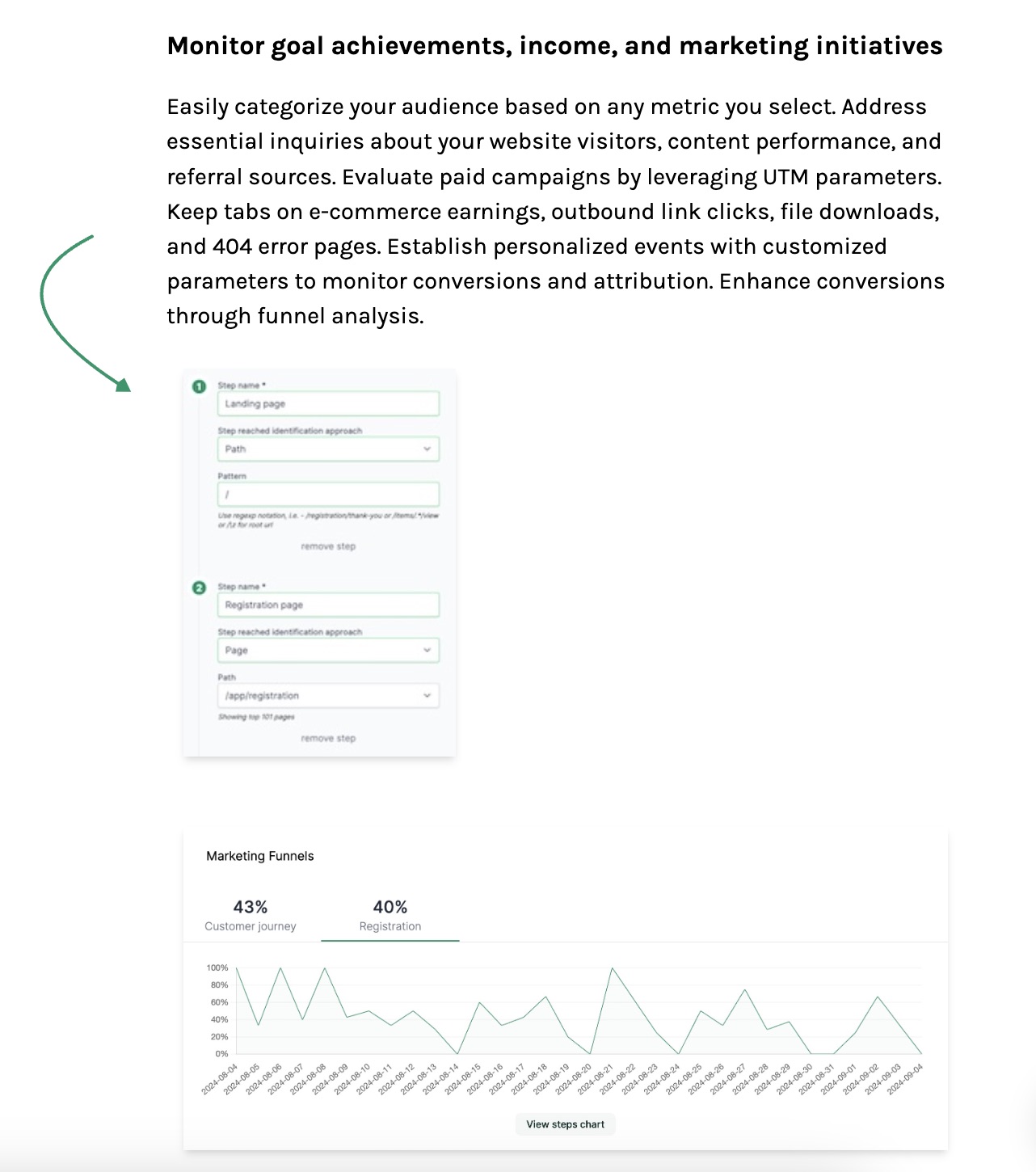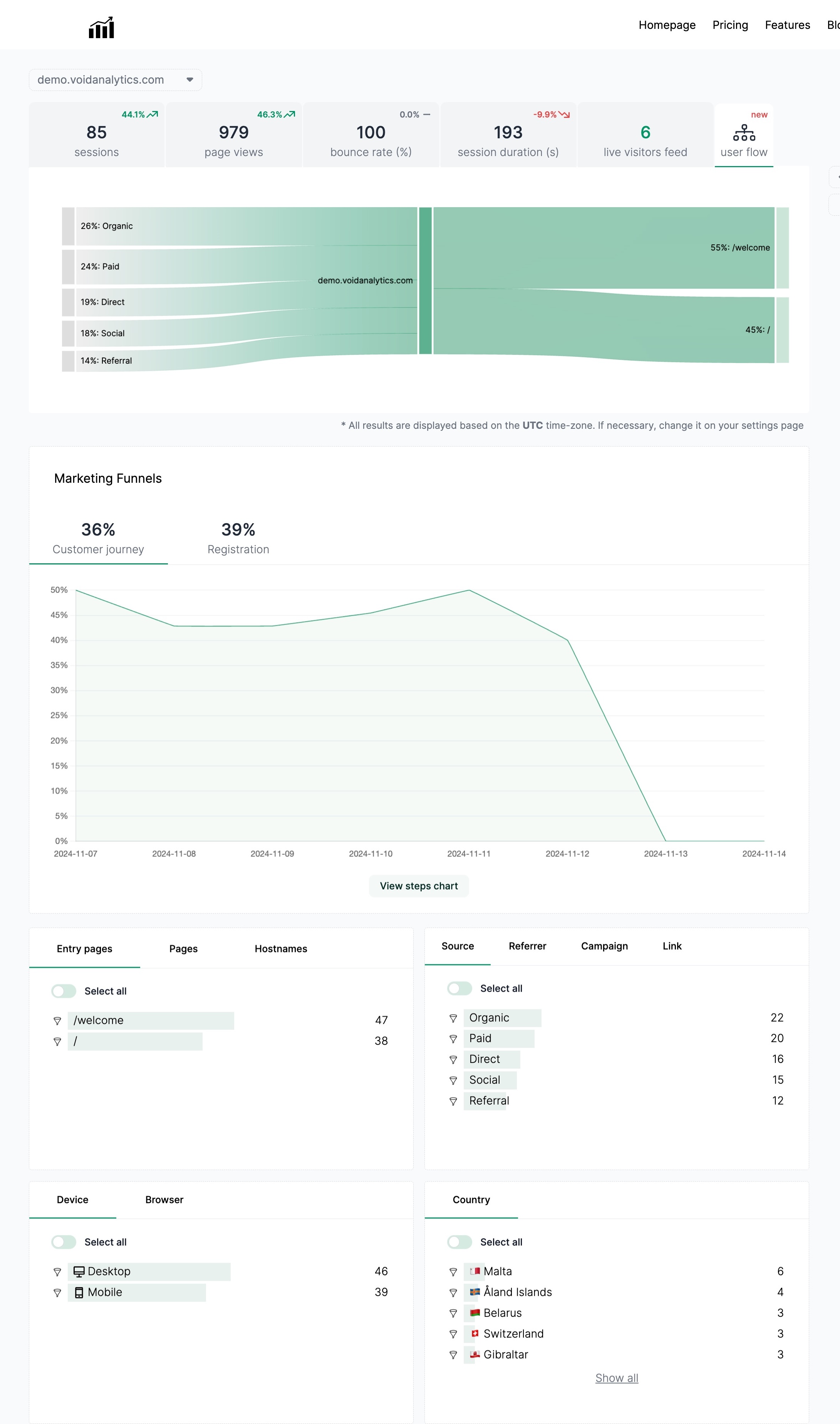Why You Should Ignore Google Analytics 4 and Choose Void Analytics Instead
Published on 2024-03-14
If you're a website owner or marketer, you're likely familiar with the importance of tracking conversion rates to measure the success of your online efforts. Conversion rate is a key metric that indicates the percentage of visitors who take a desired action on your website, such as making a purchase or signing up for a newsletter. Understanding your conversion rate can help you optimize your website, improve your marketing strategies, and ultimately drive more revenue.
One of the most popular tools for tracking website analytics is Google Analytics 4 (GA4). However, despite its widespread use, GA4 has its limitations when it comes to accurately measuring conversion rates. In this blog post, we will discuss how to find conversion rate in GA4, and why you should consider ignoring it in favor of Void Analytics.
How to Find Conversion Rate in GA4
In GA4, the process of tracking conversion rates involves setting up conversion events and goals. Conversion events are specific actions that you want to track on your website, such as completing a purchase or filling out a contact form. Goals, on the other hand, are specific objectives that you want visitors to accomplish, such as spending a certain amount of time on a page or visiting a particular section of your site.
To find your conversion rate in GA4, you can follow these steps:
Set up conversion events: In GA4, you can set up conversion events by creating custom events that track specific actions on your website. For example, if you want to track purchases, you can create an event that triggers when a visitor completes a purchase.
Set up goals: Once you have set up your conversion events, you can create goals in GA4 to track the percentage of visitors who complete those events. For example, you can set a goal to track the percentage of visitors who make a purchase on your website.
Track your conversion rate: After setting up your conversion events and goals, you can track your conversion rate in the GA4 dashboard. The conversion rate is calculated by dividing the number of conversions by the number of visitors to your website, and multiplying by 100 to get a percentage.
While GA4 provides a way to track conversion rates, it has several limitations that may impact the accuracy of your data. One of the main drawbacks of GA4 is that it samples data, meaning that it only collects data from a subset of your website traffic, rather than all visitors. This can lead to inaccuracies in your conversion rate calculations and make it difficult to get a true picture of your website performance.
Why You Should Choose Void Analytics Instead
If you're looking for a more accurate and reliable way to track conversion rates, you should consider using Void Analytics instead of GA4. Void Analytics is a powerful analytics tool that offers three key features that make it a superior choice for tracking conversion rates: simplicity, privacy friendliness, and non-sampled data.
Simplicity
One of the main advantages of Void Analytics is its simplicity. Unlike GA4, which can be complex and overwhelming for beginners, Void Analytics is designed to be user-friendly and easy to navigate. With Void Analytics, you can quickly set up conversion events and goals, track your conversion rate, and analyze your data in a clear and intuitive dashboard.
Privacy Friendly
Another key feature of Void Analytics is its commitment to privacy. Void Analytics is built on a privacy-first approach, meaning that it prioritizes the protection of user data and ensures compliance with regulations such as GDPR and CCPA. With Void Analytics, you can track conversion rates without compromising the privacy of your visitors, giving you peace of mind and building trust with your audience.
Non-Sampled Data
One of the biggest drawbacks of GA4 is its use of sampled data, which can lead to inaccuracies in your conversion rate calculations. In contrast, Void Analytics offers non-sampled data, meaning that it collects data from all visitors to your website, providing you with a more accurate and comprehensive view of your website performance. With Void Analytics, you can trust that your conversion rate calculations are based on real data, rather than estimates from a subset of your traffic.
Conclusion
Tracking conversion rates is essential for optimizing your website and driving business growth. While Google Analytics 4 is a popular choice for website analytics, its limitations in accurately measuring conversion rates make it less than ideal for businesses looking for reliable data. Void Analytics offers a superior alternative, with its simplicity, privacy-friendly approach, and non-sampled data providing a more accurate and reliable way to track conversion rates.
If you're serious about understanding your website performance and maximizing your conversions, consider ignoring Google Analytics 4 and choosing Void Analytics instead. With Void Analytics, you can trust that your conversion rate calculations are based on real data, giving you the insights you need to succeed in the competitive online landscape.

